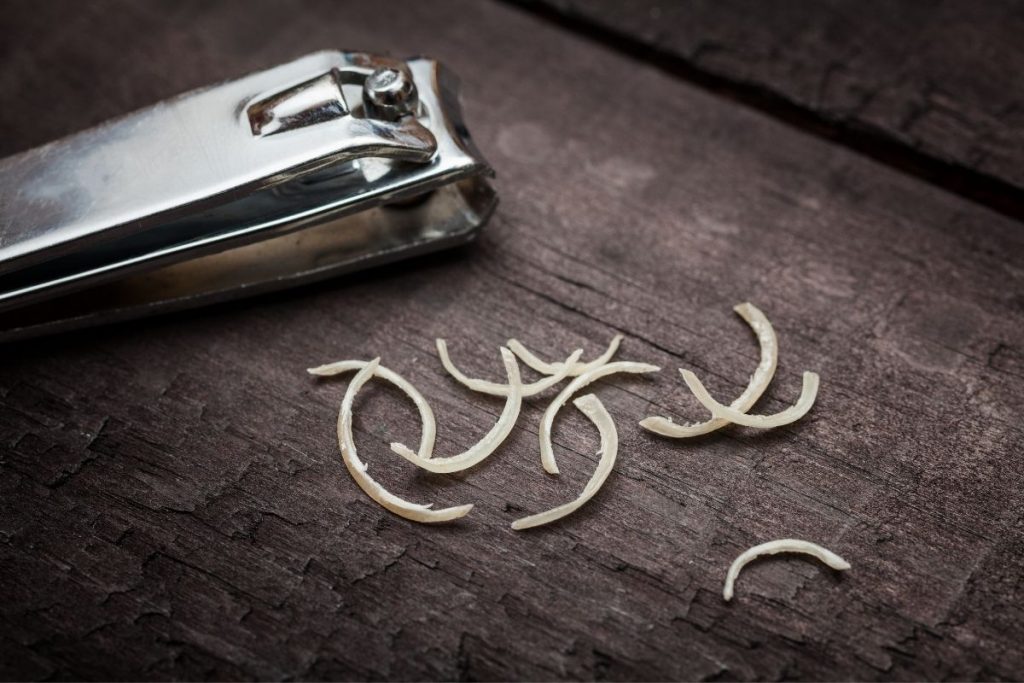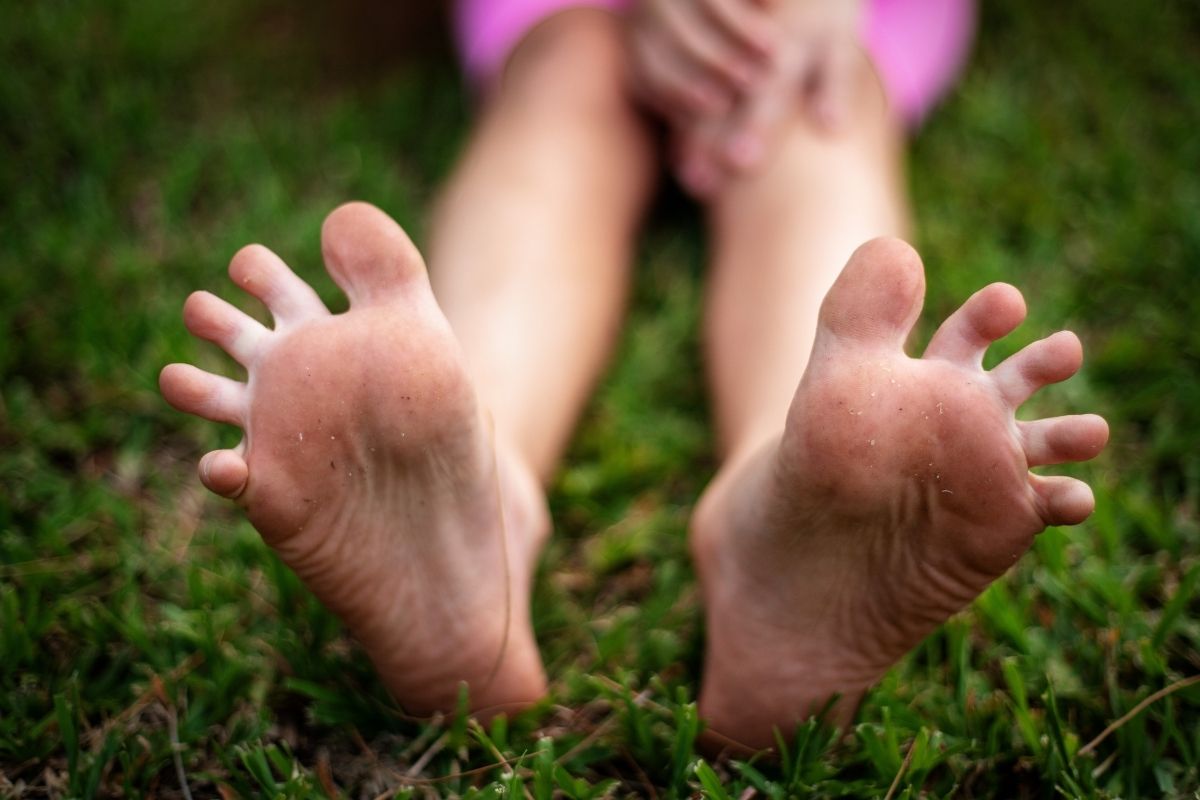Some dogs enjoy feasting on toenails from humans and other pets and, while this might seem absolutely disgusting, they can be a source of an easy snack for a dog. Most dogs are not too fussy about where food and snacks come from and, if your dog is partial to nail clippings, then he’ll probably eat them when he gets the chance.
Dogs are natural scavengers, always looking for a tasty snack. But while some snacks can be harmless, others can cause problems.
Toenails and other nail clippings can be an easy food source for dogs that like to nibble on these things.

Why do dogs eat toe nails?
Many dogs see nail clippings as a source of food and, given that many clippings, particularly those that come from feet, will have a strong odour, the attraction is that much stronger.
It is difficult to say why some dogs will eat clippings and others show no interest, as with most things dogs are individuals that, like humans, have different preferences and, in this case, tastes.
Dogs cannot really tell what they should or should not eat and, if it smells good or interesting, then it’s likely that he will eat it – nails are no exception to this.
Are toenails dangerous for a dog to eat?
Probably not, but they are not the sort of thing that you should encourage your dog to eat.
Nail clippings are a type of waste protein that the body produces and will remain in your dog’s gut until he/she next goes to the toilet, when they will be discharged.
If your dog consumed a large amount of nail clippings ( you should tidy up more if you have lots of toe nails lying around ), then he may vomit or end up having the runs.
Nail clippings could also carry bacteria which could cause an illness or infection although most dogs have hardy and resilient immune systems which would probably reduce the effect.
Is it safe to give a dog human toenail clippings?
No, it isn’t. Dogs should not eat any sort of human waste and, even though the consequences of eating toenails might not be too bad, they really are best avoided – dog’s don’t need this sort of thing in their diet.
If you’re worried that you’ve left the clippings lying around too long, or your dog is already munching on them, then try and remove them as soon as possible.
If this isn’t possible, offer him one of his own toys to chew. He should realise that these things are not food and will soon stop ingesting them.
And next time you have a pedicure, get rid of the clippings.
What to do if your dog eats toenail clippings
Unless you hoard nail clippings and your dog has eaten a bucketful, then you probably won’t need to do anything and simply let nature take her course.
If your dog becomes unwell or displays any symptoms such as shaking, shivering or listlessness ( being tired ) then you should call your vet for professional advice.
You should bear in mind that some nail clippings may have been treated with varnishes, paints or other products which could be toxic to your dog, and, if he has eaten a large quantity, then this could be dangerous to him.
Why do dogs like to eat human nails?
While it’s not a common behaviour for dogs to actively seek out and eat human nails, there could be a few reasons why a dog might show an interest in them.
Here are a few possibilities:
Scent and taste: Human nails may carry scents or flavours that dogs find intriguing. Dogs have a highly developed sense of smell, and certain scents can pique their curiosity. The natural oils and sweat on our nails might be enticing to them.
Attention-seeking: Dogs are social creatures and often seek attention from their owners. If a dog notices that their human is focused on their nails, such as during nail trimming or grooming, they may try to engage with the activity by sniffing or even attempting to nibble on the nails.
Boredom or curiosity: Dogs sometimes explore their surroundings using their mouths, similar to how humans might use their hands. If a dog is bored or curious, they may investigate objects, including nails, by mouthing or chewing on them.
Reinforcement or conditioning: In some cases, a dog may have learned that chewing on nails results in attention or rewards from their owners. If the dog receives positive reinforcement, such as petting or praise, while engaging in this behaviour, they may be more likely to continue it in the future.
Why do dogs eat toenails?
Dogs may eat toenails due to their instinctual behaviour of chewing and biting objects. Toenails can be seen as an attractive and chewable item for some dogs. However, it’s important to note that not all dogs exhibit this behaviour, and individual dogs may have different reasons for doing so.
Is it normal for dogs to eat toenails?
While it is not considered a common behaviour, some dogs may engage in eating toenails. This behaviour can be influenced by a variety of factors, including breed tendencies, boredom, curiosity, or a compulsive behaviour. It is recommended to monitor your dog’s behaviour closely and consult with a veterinarian if you have concerns about their toenail-eating habits.
Can eating toenails be harmful to dogs?
Ingesting toenails can potentially pose a health risk to dogs. The sharp edges of the toenail can cause irritation or damage to the dog’s digestive tract, leading to complications such as gastrointestinal obstruction or injury. It is advisable to discourage this behaviour.
Regular veterinary check-ups and consultations are important to address any concerns about your dog’s behavior.
Why does my dog eat my toenail clippings?
Dogs may eat toenail clippings due to their curious nature, the scent and taste of the clippings, or inadvertently associating the behaviour with attention or rewards. However, it’s important to discourage this behaviour as ingesting larger quantities of clippings can pose potential digestive risks for your dog. Properly dispose of toenail clippings and redirect your dog’s attention to more appropriate activities.
Final Words
Dogs are scavengers and will eat all sorts of things if they get the chance, and this includes nail clippings.
Smelly nail clippings, such as those from toes, are most appealing.
To prevent your dog from scoffing your body’s excess protein, simply dispose of your clippings straightaway.
Make sure that you put them in a bin that your dog cannot open – some dogs are experts at accessing rubbish bins too.




